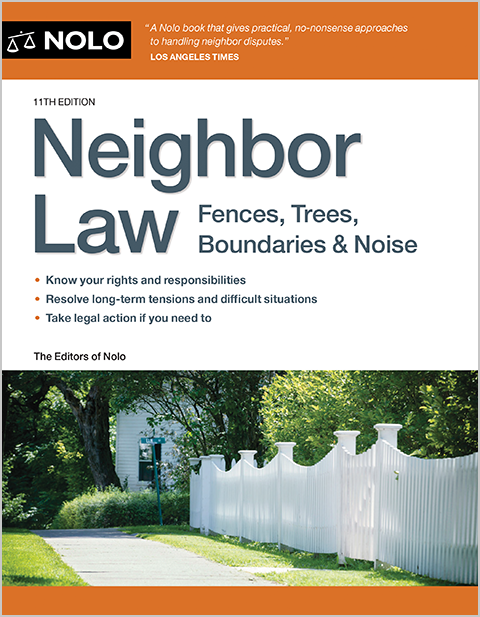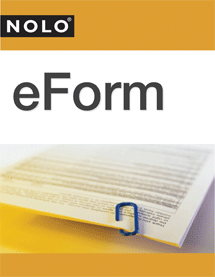Alaska law requires that before a home buyer actually makes a written offer, the seller gives them a lengthy, completed disclosure statement describing the property's condition, repair history, costs of upkeep, and more.
If you own a house, condominium unit, or parcel of land in Alaska that you want to sell, there's an important Alaska law to know about. It requires that before the buyer actually makes a written offer, the seller gives them a lengthy, completed disclosure statement. This will put the property buyer on notice of any defects with the home and prevent the buyer from nasty surprises (which could lead to lawsuits) later.
If you're selling property in the Last Frontier, what must you disclose, and how?
Disclosure Laws in Alaska for Home Sales
Alaska Stat. 34.70 et seq. broadly covers disclosure requirements for home sellers in Alaska. The statute requires that before the buyer makes a written offer for the property, the seller gives the buyer (or spouse) "by mail or in person a completed written disclosure statement." The buyer and seller can, however, agree to waive this requirement.
What if the offer comes in before you've had a chance to give the buyer your disclosure statement? In that case, the prospective buyer has three days in which they may terminate the offer by written notice if the statement was delivered in person; or six days from it being put in the mail.
Alaska's legislation outsourced the creation of the particular disclosure requirements to the state Department of Commerce, Community and Economic Development, which has created a sample form for real estate sellers to use, called the "State of Alaska Residential Real Property Transfer Disclosure Statement."
Using Alaska's Standard Disclosure Form for Your Home Sale
Alaska's Transfer Disclosure Statement starts with requesting basic information, such as when the property was built, how long the seller has lived there, and what it's constructed of. It then asks you to check boxes indicating what features your property contains (such as a garbage disposal, storage shed, security system, and so on), and then to indicate whether they have known defects or malfunctions.
You'll also need to check boxes indicating whether structural components, such as the roof, walls, gutters, chimneys, swimming pool, and so on have known defects or malfunctions, or have had repairs done within the last five years.
You must also list "Other items not covered," as in, defects that are not specifically asked about on the form.
And you'll need to tell the buyer what relevant documents you possess and can show them, such an Energy Rating Certificate or Shared Septic Agreement.
Alaska's disclosure form is unusual in that it also requires sellers to estimate monthly utility costs. The form specifically lists gas, electric, oil, propane, wood, coal, water, sewer, and refuse. Again, the goal is to avoid surprises for the buyer after the closing.
Both you and the buyer will sign this form, acknowledging that it has been given and received. Or, if the buyer agrees to waive the disclosure requirement, you'd use a portion of this same form to do so.
How Far Must I Go in Finding My Home's Defects or Malfunctions?
The Alaska disclosure form's use of the word "known" in connection with the defects or malfunctions you'll be reporting on is key. It means you don't have to hire an inspector or perform special investigations. Instead, it relies mostly on your experience living in the house as the basis for your knowledge in supplying the requested information.
Nevertheless, that's not an excuse to ignore possible defects. If you cover your eyes at the sight of water dripping from your ceiling and report that the roof is just fine, you might be committing fraud or a violation of Alaska's disclosure laws, which carries legal consequences (described below).
Why Should You Be Honest and Open in Making Disclosures About Your Alaska Property?
Like anyone trying to sell a house, you want the transaction to go smoothly and quickly. You might think to yourself: Why be honest in making these disclosures?
Sellers who violate the disclosure requirements face strict penalties. Alaska Stat. 34.70.90 notes that a seller who willfully violates this chapter or fails to perform a duty it requires is liable to the buyer for up to three times the actual damages suffered as a result. This is meant to be a punitive deterrent, and should make you think twice about any dishonesty!
Moreover, Alaska Stat. 34.70.60 mandates that disclosures be made in "good faith," which essentially means you should not try to use clever language or other such tactics to obfuscate material defects in your property. What's more, if new issues pop up after you've given the prospective buyer the disclosure statement, you're legally obligated to give them an amended statement.
There's a practical benefit to openness and honesty, too. A buyer who sees that you aren't hiding problems is likely to be cooperative in negotiations leading up to the closing.
Finally, disclosing a defect in your home will insulate you from legal liability. Imagine that you sell your condo in Juneau to a buyer without disclosing that the bathroom has a huge outbreak of mold. A buyer who closes on your condo without having discovered the mold moves in and then (inevitably) finds it might decide to sue you. Had you first disclosed the condition, Alaska Stat. 34.70.30 would have protected you: "A transferor is not liable for a defect or other condition in the real property or the real property interest being transferred if the transferor discloses the existence of the defect or condition in the disclosure statement."
In short, while you might be tempted to not disclose various defects on your disclosure form, or give the form to the buyer at the last minute, these tactics could cause you further problems down the line.
Federal Lead Disclosure Requirements
Beyond Alaska's legal requirements, real property sellers must also comply with disclosure rules under federal law. The main ones relate to lead-based paint. If you are selling a home that was built prior to 1978, you must disclose any known lead-based paint hazards in the home. (The federal lead disclosure requirements are found at 42 U.S.C.A. § § 4851-56.).
You must give an EPA-approved informational pamphlet to buyers, along with any existing reports relating to lead in the home. Additionally, you must give buyers an option to conduct a lead-based paint inspection or assessment, and include specific warning language relating to lead-based paint hazards in the purchase and sale agreement.
Further Help
You now know that as a home seller in Alaska, you are required by law to reveal known facts about its physical condition and more. However, you might still have questions about particular issues, and would be best served by consulting a professional in your area before selling your home. You can get further information about what is required of you when selling a home in Alaska from your local attorney or real estate professional.
Talk to a Lawyer
Need a lawyer? Start here.
How it Works
- Briefly tell us about your case
- Provide your contact information
- Choose attorneys to contact you
- Briefly tell us about your case
- Provide your contact information
- Choose attorneys to contact you


